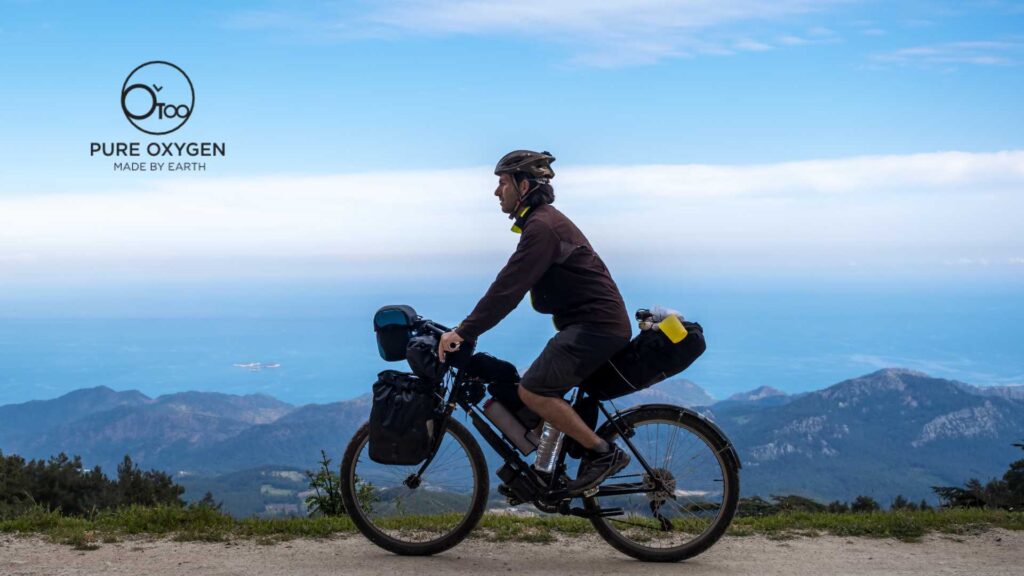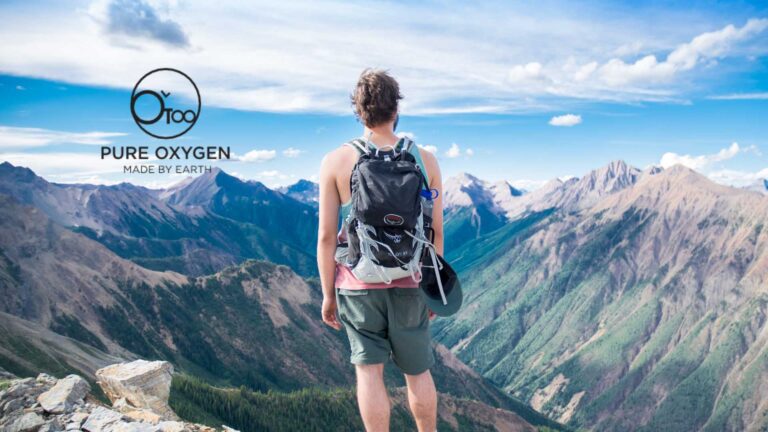Altitude is a thrilling frontier, whether you’re hiking a mountain trail, skiing fresh powder, or exploring a high-altitude city. But with elevation comes challenge. The air thins, oxygen drops, and your body has to adapt fast.
For some, it’s a breeze; for others, it’s a struggle. This guide is your roadmap to preparing for high altitude, understanding its effects, and making your trip safe and enjoyable. We’ll cover everything from acclimatization to gear, nutrition, and even a fun boost from Otoo’s oxygen bursts. So, let’s dive in and get you ready for the heights.
What Happens at High Altitude?
At elevations above 2,500 meters (8,200 feet), the air pressure drops, and each breath delivers less oxygen. Your body responds by breathing faster and deeper, trying to compensate. Your heart pumps harder to circulate oxygen-rich blood, and you might feel tired or dizzy. These are normal reactions, but they can escalate into altitude sickness. Things like headaches, nausea, or trouble sleeping. This affects about 25% of people who ascend quickly. In rare cases, it can lead to serious conditions like fluid in the lungs or brain swelling. Knowing this helps you prep smart.
Understanding Altitude Zones
Altitude isn’t one-size-fits-all—it’s split into zones, each hitting your body differently. Low altitude (0-1,500 meters) is a walk in the park for most, with plenty of oxygen to go around. Moderate altitude (1,500-2,500 meters) might make you puff a bit during a climb, but you’ll adjust fast.
High altitude (2,500-3,500) is where headaches and fatigue can kick in, especially if you rush up. Very high altitude (3,500-5,500 meters) drops oxygen hard, and severe sickness becomes a real risk. Extreme altitude (above 5,500 meters) is mountaineer territory. Matching your trip to these zones sets you up right.
The Best Way to Prepare for High Altitude
Preparation starts with easing into it. Climb gradually. You can spend a night at 6,000 feet before hitting 10,000 to let your body crank out more red blood cells for oxygen. Drink at least 3-4 liters of water daily since altitude dries you out, and load up on carbs like rice or pasta for quick energy. You should probably skip the booze and coffee as they’ll just dehydrate you more.
Get your heart pumping with running or biking weeks ahead, and maybe try breathing exercises to stretch those lungs. Some people swear by meds like acetazolamide. Please, please check with your doc first.
Pre-Trip Health Check
Before you go, a doctor’s visit is a must, especially if you’ve got health quirks. Altitude can mess with heart or lung issues like asthma or COPD, so get a pro’s take on your risks. They’ll tweak meds if needed. Blood pressure pills might need a new dose up there.
Check for travel shots too; some high spots have odd bugs. A quick fitness once-over can flag anything to work on. It’s not a golden ticket against sickness, but it’s a solid start.
Altitude Training at Home
You can’t fake altitude completely, but training helps. Hit the treadmill or bike for 30 minutes, 3-4 times a week, to build stamina. Mix in interval sprints. Push hard, then ease off to match hiking’s rhythm that can sometimes be inconsistent.
Squats and planks bulk up legs and core for pack-carrying. Deep breathing drills (inhale 4, hold 4, exhale 4) stretch your lungs. If you’re fancy, a hypoxic mask mimics thin air. Start 6-8 weeks out. Slow and steady wins here.

Nutrition for Altitude
Food fuels your altitude game. Carbs, 60-70% of your calories, digest easy and keep you going; think oatmeal or bread. Protein (15-20%) from chicken or beans fixes muscles without weighing you down. Fats (10-15%) like nuts or avocado give slow-burn energy but go light. They’re tough to process up high. Sip water all day, tossing in electrolytes to stay balanced. Try oatmeal with fruit for breakfast, a hummus wrap for lunch, or pasta with lean meat for dinner. Small, frequent bites beat big greasy meals.
Mental Preparation
Altitude tests your head as much as your body. Expect to slow down and picture yourself nailing that summit for a confidence kick. Meditation or deep breaths tame stress when the air feels thin. Keep your eyes on the prize, not the grind, and roll with hiccups like a delayed start. A tough mind turns a rough day into a win.
Gear Essentials
Gear can make or break your trip. Layer up: moisture-wicking shirts, a fleece, and a waterproof jacket, plus hats and gloves. Sturdy boots and wool socks save your feet. Sunscreen (SPF 50), shades, and lip balm fight the rays.
Pack a 3-liter hydration system and water purifiers. High-energy snacks like nuts, bars and lightweight meals. Toss in a first-aid kit, map, headlamp, and Otoo’s oxygen bursts for a quick lift. Test it all before you go.
Handling Altitude Sickness
Feeling off? Don’t push it. Rest up if it lingers, drop 1,000 feet fast. Oxygen helps; Otoo’s cans give a zippy boost, though they’re not a fix. These cans DO NOT replace oxygen tanks that you might need if you go for very high altitude.
If headaches or nausea stick around or get worse, get help pronto. Playing it safe beats playing hero.
A Boost from Otoo’s Oxygen Bursts
Sluggish on the trail? Otoo’s oxygen bursts are a game-changer. These flavored cans, mint or citrus deliver a fast oxygen hit to perk you up. They’re not a cure-all, but they’re perfect for a mid-hike refresh. Plus it makes you feel like you can “taste the air”. So on top on the oxygen it gives to your body, you have a much more enjoyable experience. Pop one, breathe deep, and keep soaking in the views.
Extra Tips You Won’t Find Everywhere
Little tricks go a long way. Sleep with your head propped up. Things like a rolled jacket works. Test boots and packs early to dodge blisters. Appetite fading? Pack chocolate or peanut butter to lure yourself to eat. Buddy up and set a distress signal like three whistles. Take it slow, snap pics and let your body catch up. These hacks come straight from the pros.
Common Mistakes to Avoid
Newbies trip up easy. Don’t rush the climb. Ease in to acclimatize. Headaches aren’t just tired vibes; they’re red flags. Overdoing it burns you out, so pace yourself. Skimp on water or food, and you’ll crash. Unchecked gear or ignored weather can bite you hard. Sidestep these, and you’re golden.
Day in the Life at Altitude
Picture this: you wake at 6 a.m., groggy from thin air, and sip water right off. Breakfast is oatmeal with nuts for quick energy. You layer up, check your pack, and hit the trail slow, breathing deep. Lunch is a wrap at a lookout, with an Otoo burst to lift the fog. Afternoon’s a steady climb, hydrating nonstop. By dusk, you’re camped, munching pasta, and stargazing, tired but buzzing. That’s altitude living.
Weather at Altitude
Altitude weather’s a wild card. Mornings might glow sunny, then bam, clouds roll in, winds howl, or snow drops. Check forecasts twice daily, but pack for surprises. A sudden chill or UV spike can catch you off guard, so layers and sunscreen are non-negotiable.
High-Altitude Destinations Worth Visiting
Dreaming of heights? Try these: Cusco, Peru (3,400 meters) stuns with Inca vibes. Leh, India (3,500 meters) blends rugged peaks and monasteries. Colorado’s Breckenridge (2,900 meters) mixes skiing with charm. Each tests your prep and rewards it.


